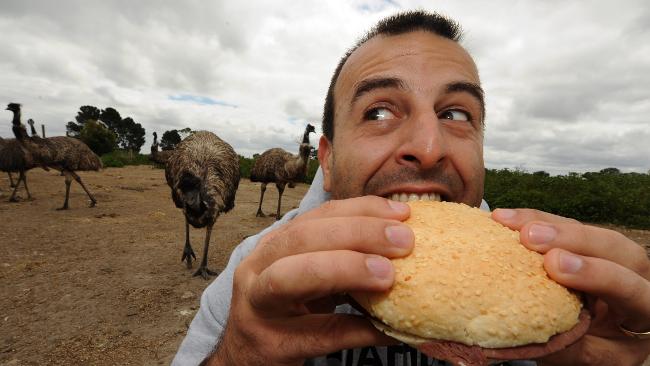In 1991 a meteorite named BA missed us by only 170,000 kilometres, less than half the distance to the Moon. That's about 2.3 hours flight time for the mini-asteroid, or 1.5 hours flight time for the Earth. It was the closest near miss of a meteor the Earth had ever seen. But there have been much bigger rocks which have just missed us. In March 1989 a 100 metre meteor (called 1989 FC) skimmed past at one and a half times the distance between the Earth and the Moon.
In 1908, a fifty metre long meteor landed in Tungusta, in Siberia. It blew over all the trees for 50 kilometres around and changed the climate over the earth for several years.
Australia has about twenty known impact craters - and more are being added to the list each year.
The most famous one is Wolf Creek Crater (WA, 19º10'S, 127º48'E), about 130 kilometres south of Halls Creek.
The local Djaru Aboriginal people know it as Kandimalal. It was brought to the attention of science after being spotted during an aerial survey in 1947.
It's the second most perfect crater known on the planet. The American astronauts came to train in it and to get a feel of what the moon craters would be like. It's a very grand crater, about 900 metres across, with a well-formed rim towering 25 metres over the surrounding countryside.
Henbury Craters (NT, 24º 34'S, 133º 10'E) are a collection of 14 craters, about 130 kilometres south of Alice Springs. They are scattered over an area of about one square kilometre. The craters range from 10 metres to about 73 metres across. The Aboriginal name for these craters is ''chindu chinna waru chingi yabu'' which roughly means ''sun walk fire devil rock''. They are quite young, about 15,000 years old.
Boxhole Crater (NT, 22º 37'S, 135º 12'E) is almost perfectly circular - 175 metres across, with the rim rising some 10-17 metres above the crater floor. It also was made about 30,000 years ago in Aboriginal times, about 30,000 years ago .
Gosse's Bluff (NT, 23º 50'S, 132º 18'E) is a magnificent crater. About 130 million years ago, a very fast, quite big lump rammed through our atmosphere and penetrated some 600 metres into the ground, where it vapourised and exploded. Several hundred square kilometres of countryside bounded into the air, and a mushroom cloud rose 20 kilometres into the upper atmosphere. The impact formed a huge crater 22 kilometres across.
Meteor Crater map



















































